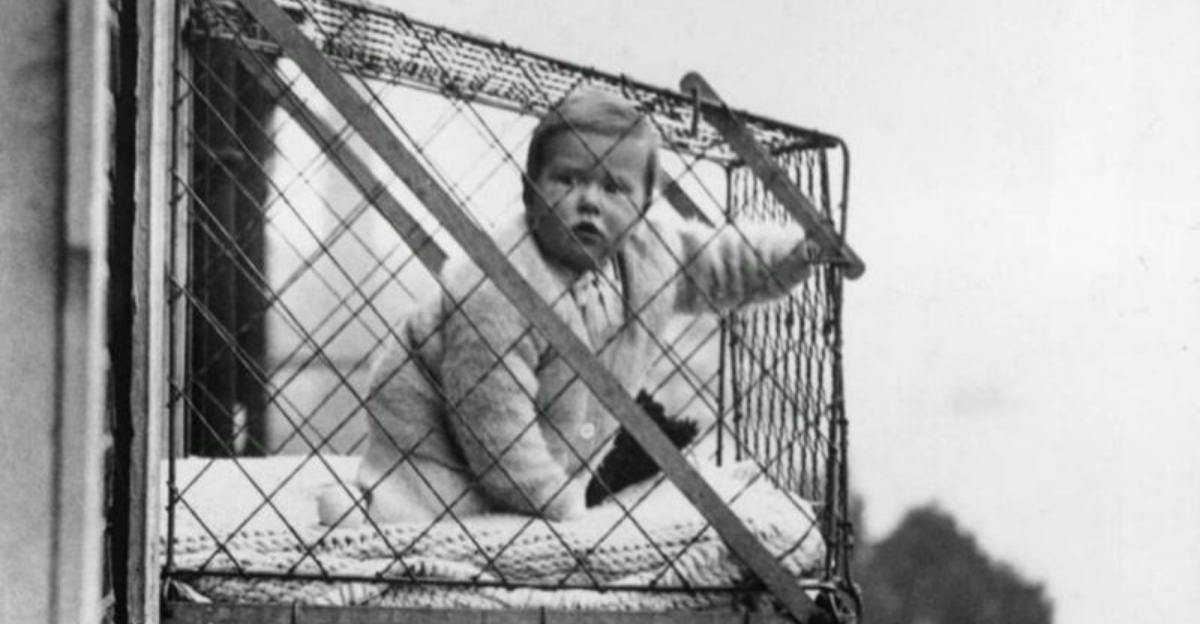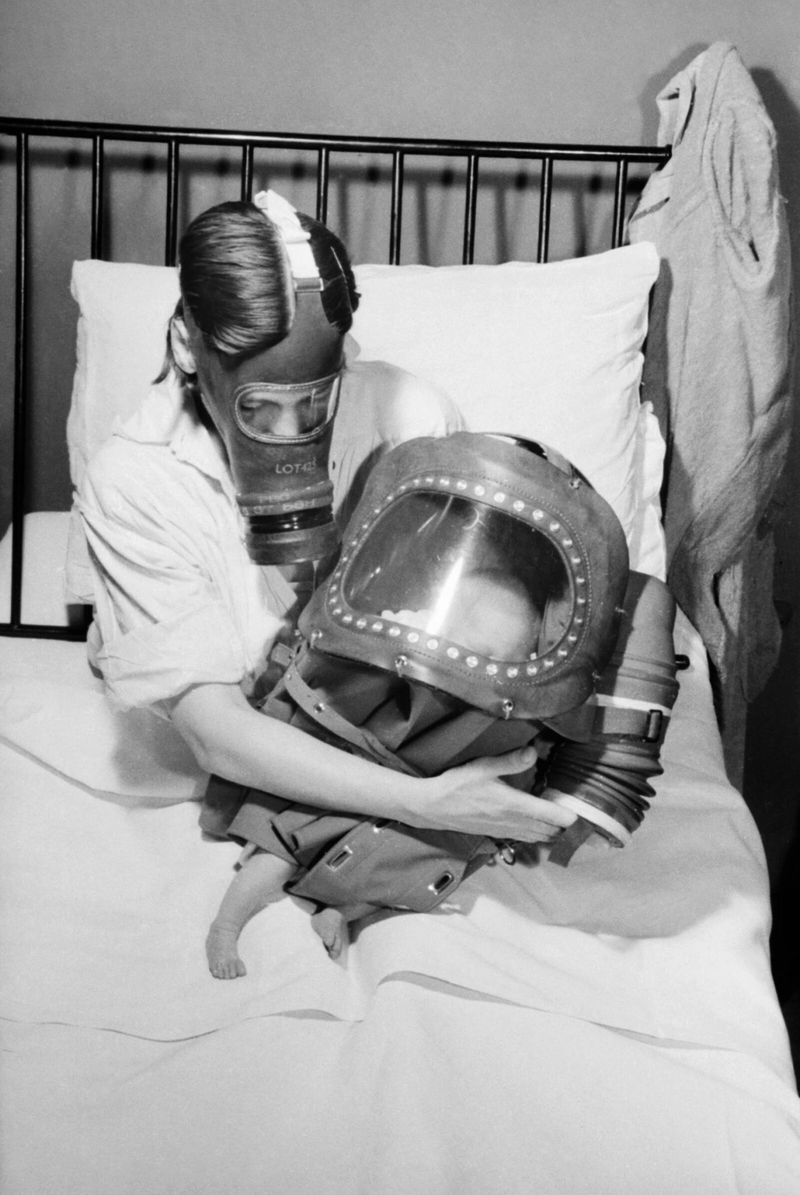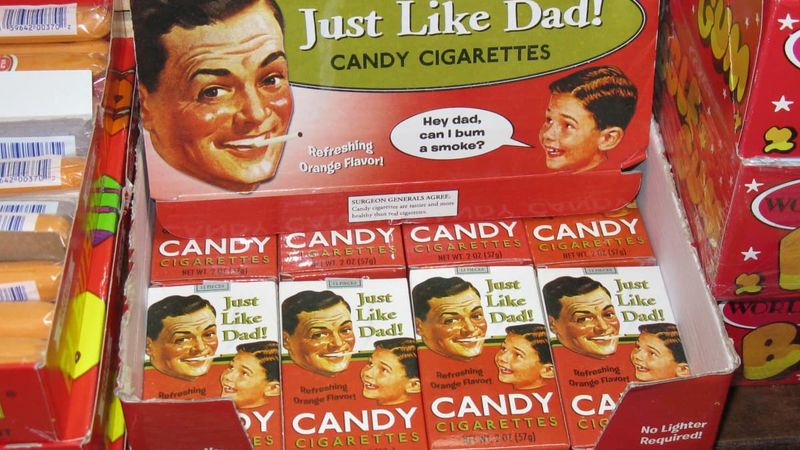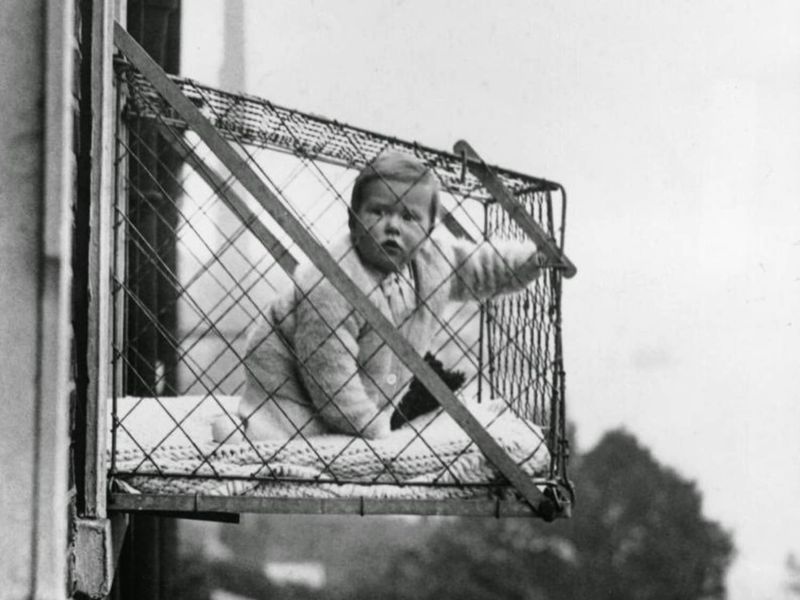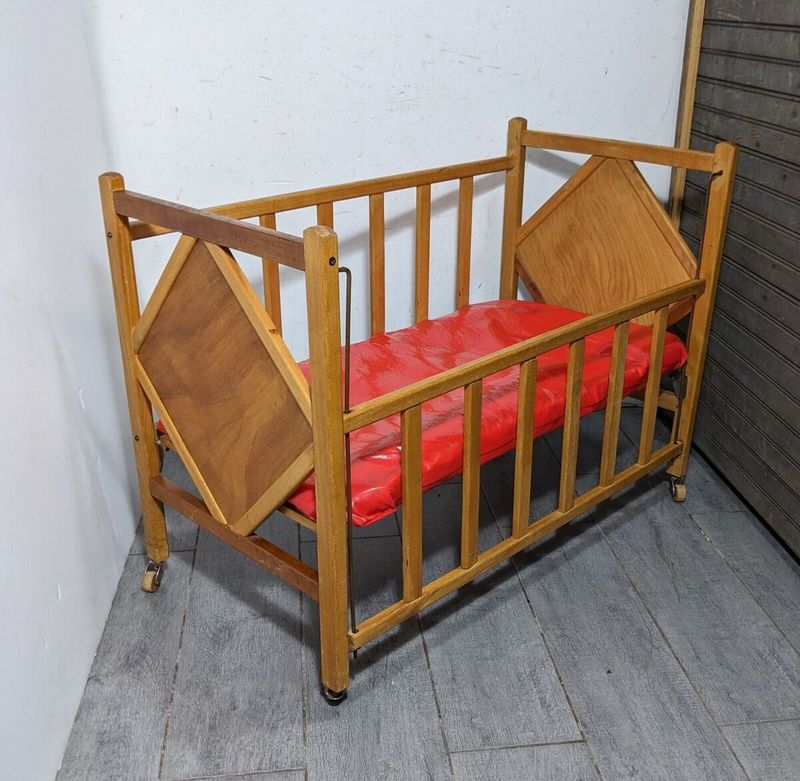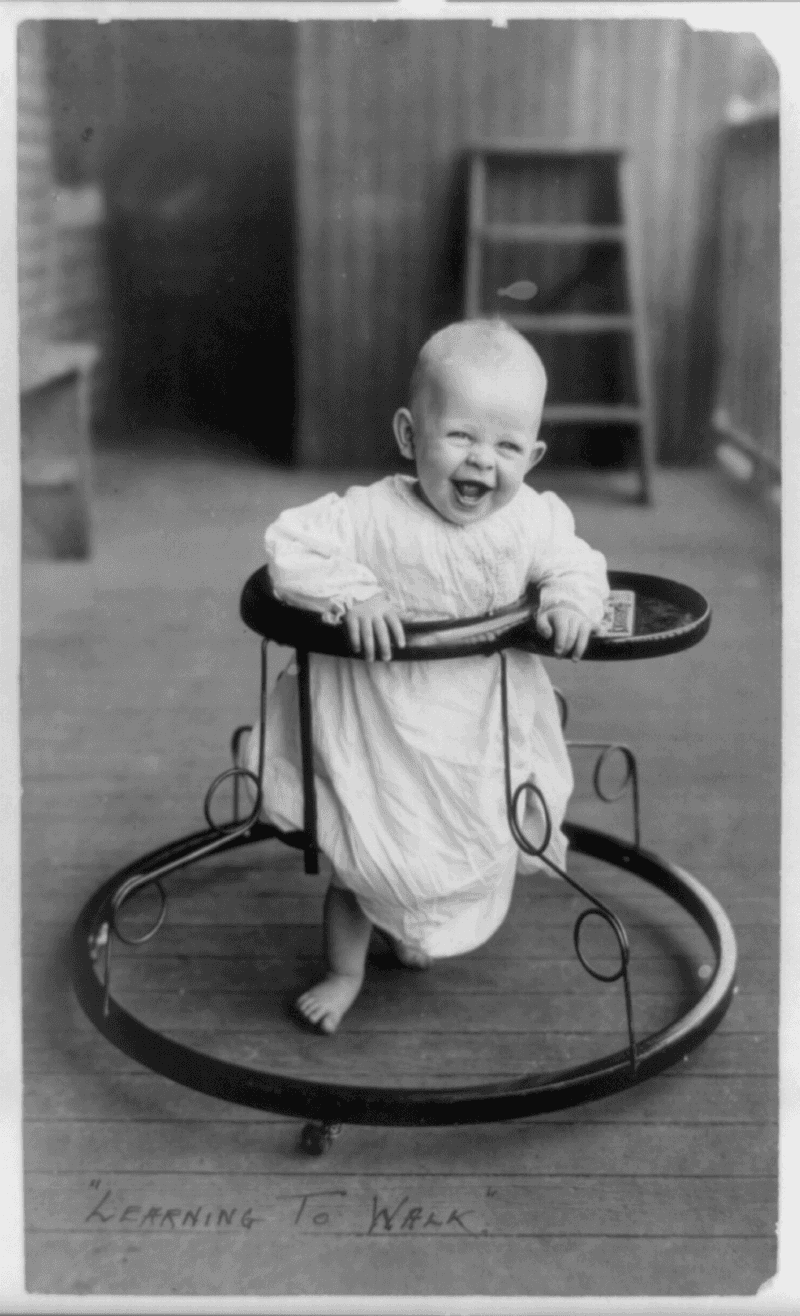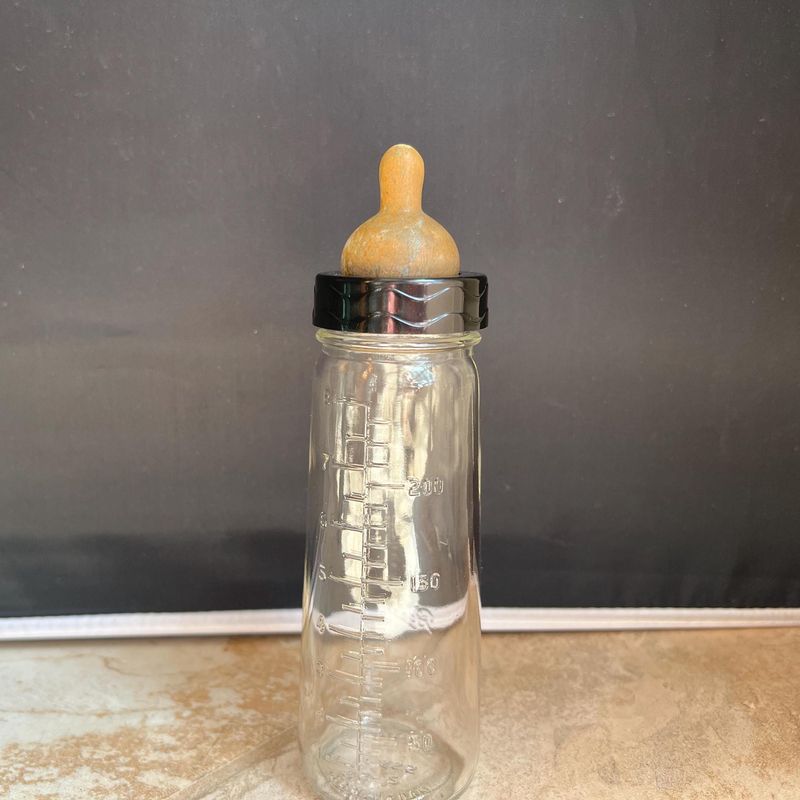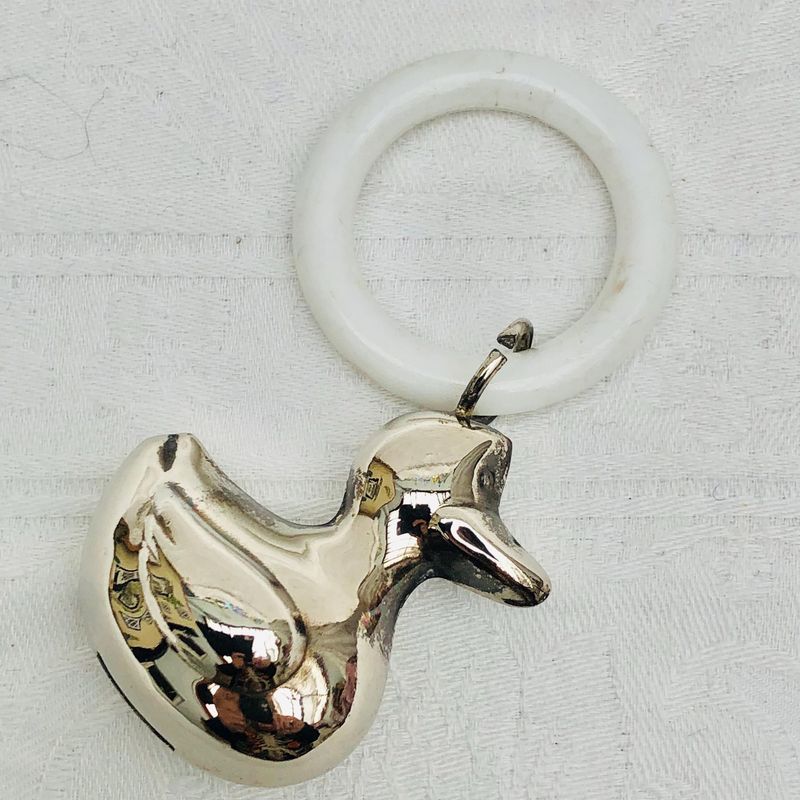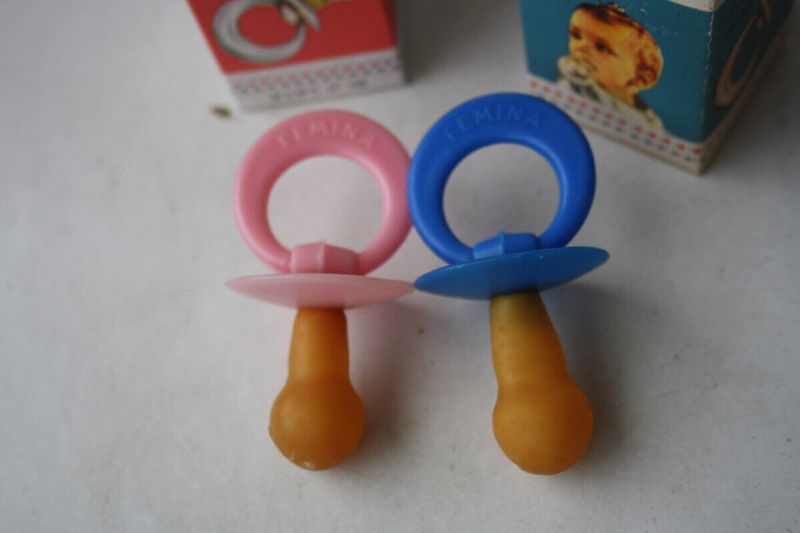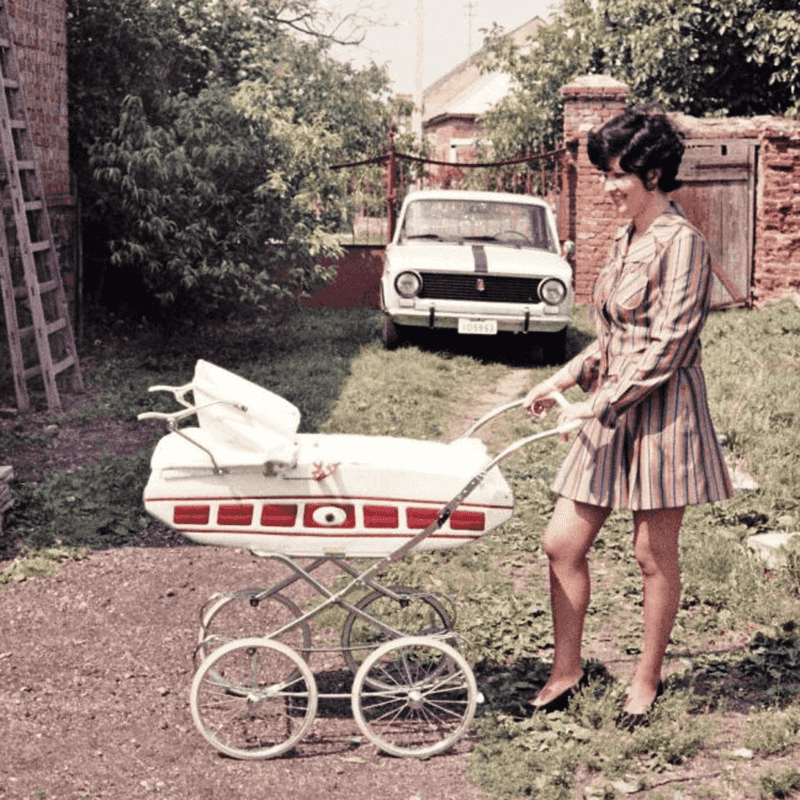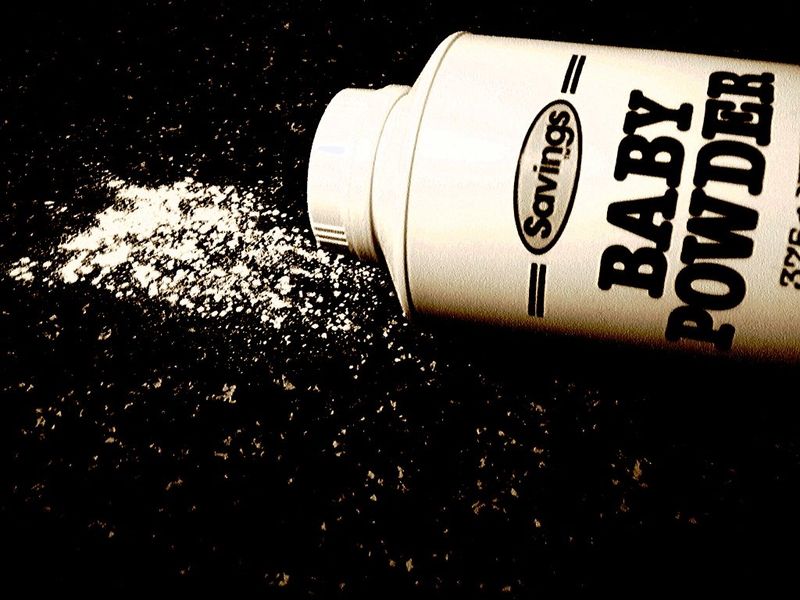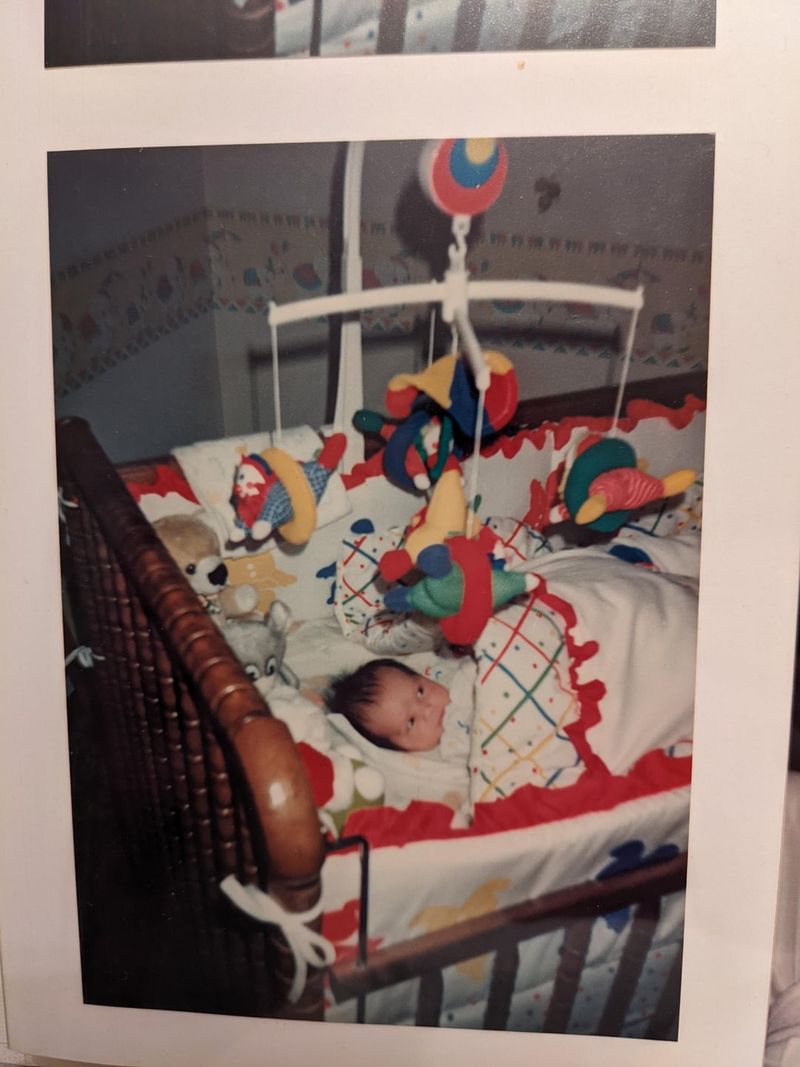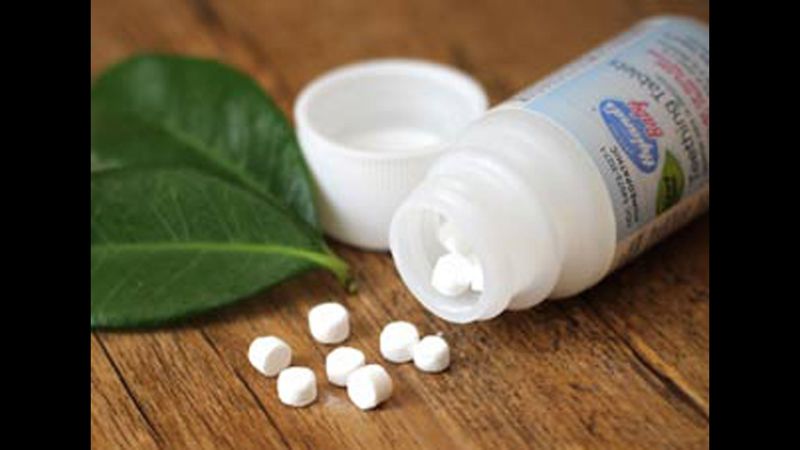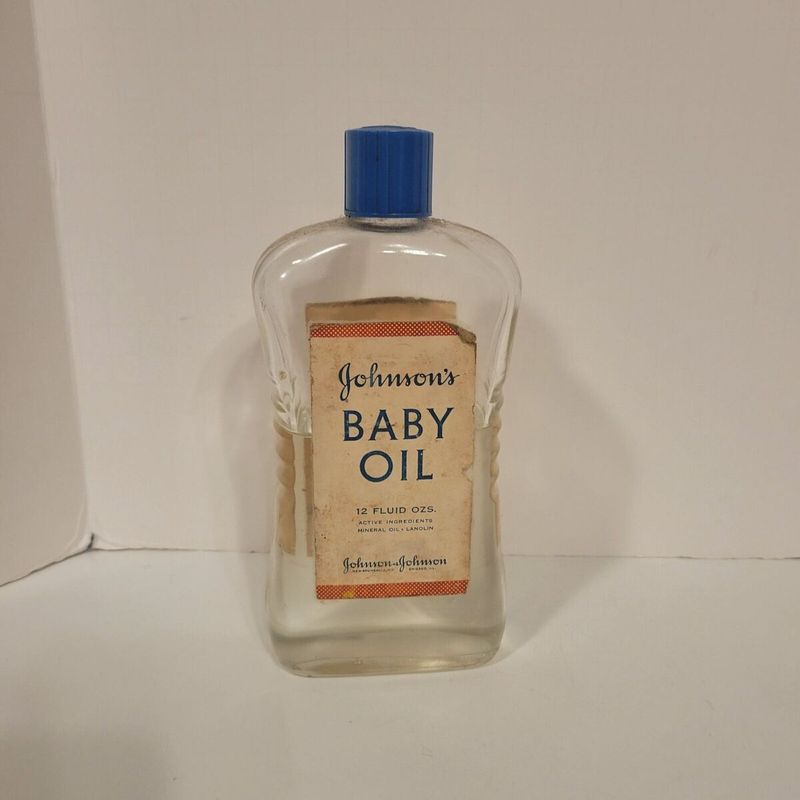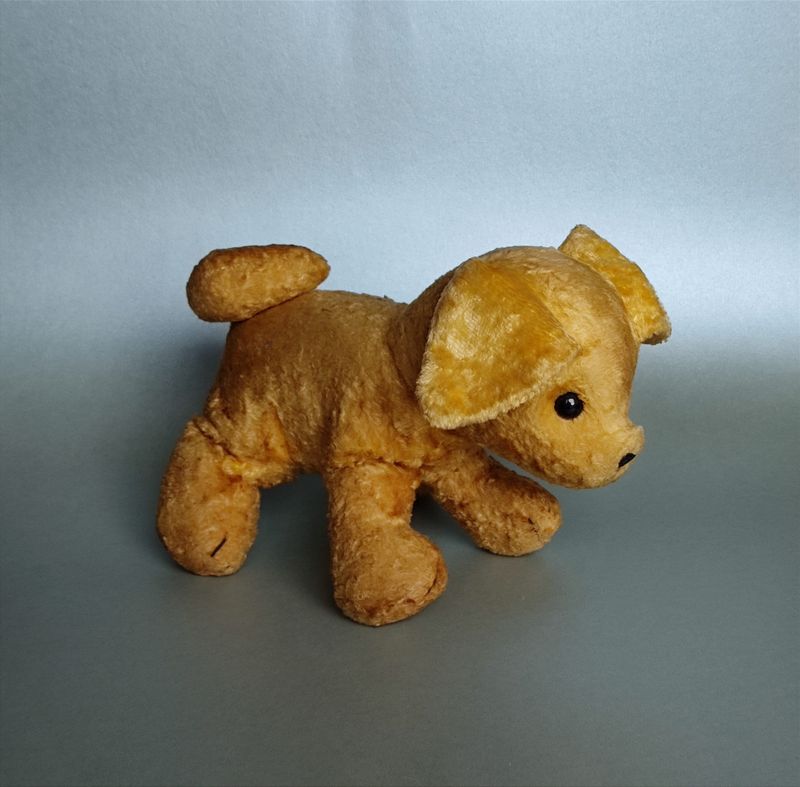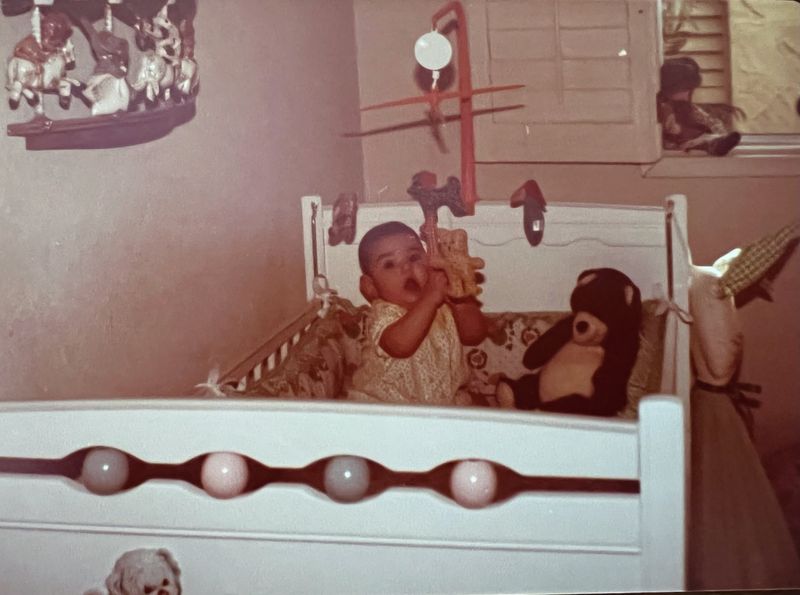The 1960s were a time of innovation and change, but some baby products from that era would raise eyebrows today. From questionable safety standards to bizarre designs, these items reflect a different time in parenting.
Let’s explore these surprising products and see why they wouldn’t make it to modern shelves.
1. Lead-Based Baby Rattles
Lead-based baby rattles from the 1960s pose a chilling reminder of past manufacturing norms. Although attractive, these toys carried significant health risks due to lead exposure.
Today, strict regulations ensure that toys are safe and non-toxic, protecting children from harmful substances. Parents are now vigilant about checking product safety certifications.
This item underscores the importance of rigorous testing and regulation in toy manufacturing, showing how consumer protection has evolved to prioritize children’s health and well-being.
2. Infant Car Hammock
The infant car hammock was a precarious solution for traveling with babies during the 1960s. This product suspended infants between the front seats, lacking any real protection in case of an accident.
Modern car seats are rigorously tested for safety, highlighting the stark contrast to past practices. Today, parents rely on advanced technology to ensure their children’s safety on the road.
The car hammock serves as a historical lesson in the importance of stringent safety regulations, illustrating how far we’ve come in protecting our most precious passengers.
3. Baby Calming Syrup
Baby calming syrup, often containing alcohol or opiates, was marketed as a solution for fussy infants in the 1960s. The risks associated with such ingredients make this product unthinkable today.
Modern parents seek safer methods to soothe their children, like gentle rocking or soft music. Awareness of addiction and health impacts have made these syrups obsolete.
This product illustrates a time when the convenience of quieting a baby overshadowed concerns about health, highlighting the progress made in understanding infant care and prioritizing safety.
4. Baby Gas Mask
During the Cold War, the baby gas mask was a stark example of the fear-driven market. While intended to protect infants, the practicality was questionable.
Today, parents focus on nurturing safe and peaceful environments for their children, rather than preparing for worst-case scenarios in such a stark manner. The gas mask is a relic of its time, reflecting societal anxiety.
This item serves as a poignant reminder of the cultural context influencing product design, reminding us of the peace of mind that comes with modern living.
5. Toddler Cigarette Candy
Cigarette candy marketed to toddlers in the 1960s normalizes a habit that is now widely discouraged. These candy sticks imitated cigarettes, influencing young minds at an impressionable age.
Modern parents advocate for healthier habits, avoiding toys or candies that mimic adult behaviors with negative health impacts. Awareness of smoking’s dangers has shifted societal norms significantly.
This product serves as a stark reminder of how far public health education has come, emphasizing the importance of instilling positive habits and awareness from a young age.
6. Baby Cage
In the 1960s, the baby cage was designed to hang outside apartment windows, providing babies with fresh air in urban environments.
Parents believed this contraption promoted health, but today, it raises serious safety concerns. Imagine suspending your child several stories up!
The idea of fresh air might be enticing, but the lack of protection against falls or harsh weather conditions makes this a no-go today. Modern parents prioritize safety, opting for more secure ways to ensure their children enjoy the outdoors.
The baby cage is a nostalgic reminder of past parenting practices, highlighting how much safety standards have evolved.
7. Baby High Chair with No Harness
The 1960s baby high chair often lacked essential safety features like harnesses, posing risks during mealtime. Modern designs prioritize safety, with secure straps and stable foundations.
Parents today are diligent about ensuring high chairs meet strict safety standards, reflecting the evolution of product safety awareness.
This high chair is a reminder of how design improvements have enhanced child safety, ensuring that mealtimes are both enjoyable and secure. It highlights the progress made in product development focused on child protection.
8. Wooden Baby Crib with Drop-Side
Drop-side cribs were once popular for their convenience, but safety concerns led to their eventual ban. These cribs posed risks of entrapment and injury.
Modern cribs have fixed sides and adhere to rigorous safety standards, providing a secure environment for infants.
This crib serves as a lesson in the importance of continuous safety evaluation, illustrating how product design and regulations evolve to protect our youngest family members.
9. Asbestos-Lined Baby Blankets
Shockingly, some baby blankets and mattress pads contained asbestos for insulation, exposing infants to toxic fibers. The 1960s were rife with misconceptions about asbestos, believed to be a miracle material for its fire-resistant properties.
Parents unknowingly wrapped their babies in these hazardous blankets, thinking they were providing the best protection.
This exposure had long-term health implications, as asbestos fibers are known carcinogens. Fortunately, awareness and regulations today prevent such dangerous oversights.
It’s a stark reminder of why we must question and scrutinize the materials used in baby products.
10. Infant Walkers with No Safety Brakes
Walkers in the ’60s had no safety features, making stairway accidents terrifyingly common.
These walkers, designed to give babies a sense of mobility, lacked the essential brakes that we see in today’s models. Parents often witnessed their infants zooming uncontrollably across rooms.
The absence of safety mechanisms led to numerous accidents, particularly when stairs were nearby. The horrifying scenarios prompted a re-evaluation of walker designs, leading to safer models that emphasize stability and control.
11. Glass Baby Bottles Without Safety Coatings
Glass bottles were prone to shattering, posing serious injury risks for babies and parents alike. In the 1960s, baby bottles made of glass were common, as they were believed to be more hygienic.
However, these bottles were fragile, and without protective coatings, they easily broke when dropped.
Parents faced constant anxiety over potential injuries from shattered glass, leading to a shift towards safer materials in modern bottle designs.
The evolution towards unbreakable plastics and shatter-resistant coatings highlights the importance of safety innovation.
12. Mercury-Filled Baby Teething Rings
Some teething rings were filled with liquid mercury—an extremely toxic substance that could leak if the ring was punctured.
The allure of using mercury was its smooth, liquid quality, perceived as soothing for teething infants. However, mercury’s toxicity was not widely recognized at the time.
The potential for leakage posed severe health risks, including heavy metal poisoning.
This dangerous oversight underscores the progress in today’s standards for non-toxic and safe baby products. It’s crucial to ensure that teething toys are free from harmful substances.
13. Lead-Based Baby Pacifiers
Lead, a toxic heavy metal, was shockingly used in some pacifiers during the 1960s. Parents were unaware of the dangers, believing in the durability and weight that lead provided.
However, the exposure to lead through mouthing these pacifiers posed serious health risks.
Lead poisoning is particularly harmful to infants, affecting neurological development and causing long-term health issues.
Thankfully, modern regulations strictly prohibit such materials in baby products. This tale serves as a reminder of the importance of vigilance in product safety standards.
14. Baby Carriage with No Restraints
Imagine a baby carriage gliding down the street with nothing to secure the infant! In the 1960s, some carriages were manufactured without any restraints, leaving babies vulnerable to tumbles.
Parents often had to keep a close eye on their wandering strollers.
The lack of seat belts or harnesses led to numerous accidents, prompting a redesign of baby carriages to include essential safety features. Today, baby strollers come with robust harness systems, reflecting the lessons learned from past oversights.
15. Car Seats with No Restraints
In the 1960s, baby car seats were more about providing a perch than protection. Resembling a mere padded chair, these seats were not equipped with restraints or seatbelts. Safety was an afterthought, as the focus was on convenience and comfort.
With no real protection in the event of a crash, these seats were essentially a cushion, leaving babies vulnerable. Modern car seats emphasize safety with secure harnesses and impact protection.
This shift underscores a significant advancement in awareness and technology, highlighting how far we’ve come in child safety. It’s hard to imagine these seats were once standard.
16. Baby Powder with Asbestos-Contaminated Talc
Baby powders in the 1960s often contained talc, a mineral sometimes contaminated with asbestos. This posed significant health risks, as asbestos is a known carcinogen.
Parents unknowingly applied these powders to their infants, believing they were safe. The soft texture and pleasant scent masked a potentially dangerous reality.
Over time, public awareness and scientific advancements have led to stricter regulations. Modern products are rigorously tested for safety, prioritizing health over aesthetics.
The change in standards reflects an increased understanding of long-term health implications and the need for protective consumer practices.
17. Crib Bumpers with Thick Padding
Thick crib bumpers were once a staple in baby nurseries, believed to shield infants from hard crib slats. However, they increased the risk of suffocation and Sudden Infant Death Syndrome (SIDS).
Despite being marketed as essential, these bumpers posed hidden dangers. Modern guidelines recommend bare cribs to ensure safe sleep environments.
The evolution of crib design emphasizes breathability and simplicity, eliminating unnecessary risks.
Parents today are better informed, thanks to research and advocacy. This change highlights a critical shift in priorities, from aesthetic appeal to the paramount importance of infant safety.
18. Teething Tablets with Belladonna (a Toxic Plant)
Teething tablets in the 1960s sometimes contained belladonna, a plant with toxic properties. Despite intentions to soothe infants, these tablets posed serious health risks.
The use of belladonna, known for its sedative effects, overlooked potential side effects. Modern regulations have eliminated such hazardous ingredients, emphasizing child safety.
Parents now have safer alternatives, reflecting a shift towards non-toxic products. This change demonstrates increased vigilance and the prioritization of health over quick fixes.
Lessons learned from past practices continue to shape safety standards and consumer expectations.
19. Baby Swings with No Seatbelts
Older baby swings often lacked proper restraints, leaving infants at risk of falls and injuries. The absence of seatbelts made them unsafe during playful motions.
In pursuit of entertainment, safety was compromised. Today, baby swings are designed with secure harnesses and stability features, ensuring protection.
This evolution in design underscores a broader commitment to child safety. Parents can now enjoy peace of mind, knowing their children are protected.
The journey from rudimentary swings to modern designs highlights the importance of continuous improvement in childcare products.
20. Baby Oil Containing Harmful Mineral Oils
In the 1960s, baby oils commonly contained mineral oils, which seemed harmless at the time. However, these oils could pose a severe risk if inhaled, leading to potential lung issues in infants.
The practice of using mineral oils was prevalent, despite growing concerns from some medical professionals. Parents were often unaware of the potential dangers.
Today, we know that alternatives like natural plant-based oils are far safer for delicate baby skin. It’s essential for parents to read labels and choose products that prioritize infant health and safety.
21. Stuffed Animals Filled with Sawdust
Surprisingly, many stuffed animals in the 1960s were filled with sawdust. This filling was not only a potential choking hazard but could also harbor mold if it became damp.
Children’s toys, made for comfort and play, inadvertently carried health risks unknown to many parents at the time. Sawdust, a cheap and accessible material, was commonly used for stuffing.
Today, stuffing materials have evolved, with safety and hygiene as top priorities. Plush toys are now filled with hypoallergenic synthetic fibers, ensuring they are safe for all ages.
22. Toy Mobiles with Small, Swallowable Pieces
Crib mobiles from the 1960s, while visually stunning, often included small parts that could detach easily. These detachable pieces posed significant choking hazards for curious babies.
Parents appreciated their calming effects, but the risk of small pieces falling into cribs was a real danger. Awareness of such hazards was not as prevalent as it is today.
Modern mobiles are designed with safety in mind, ensuring all components are securely attached. They provide the same visual stimulation without the added risk, keeping infants both amused and safe.
